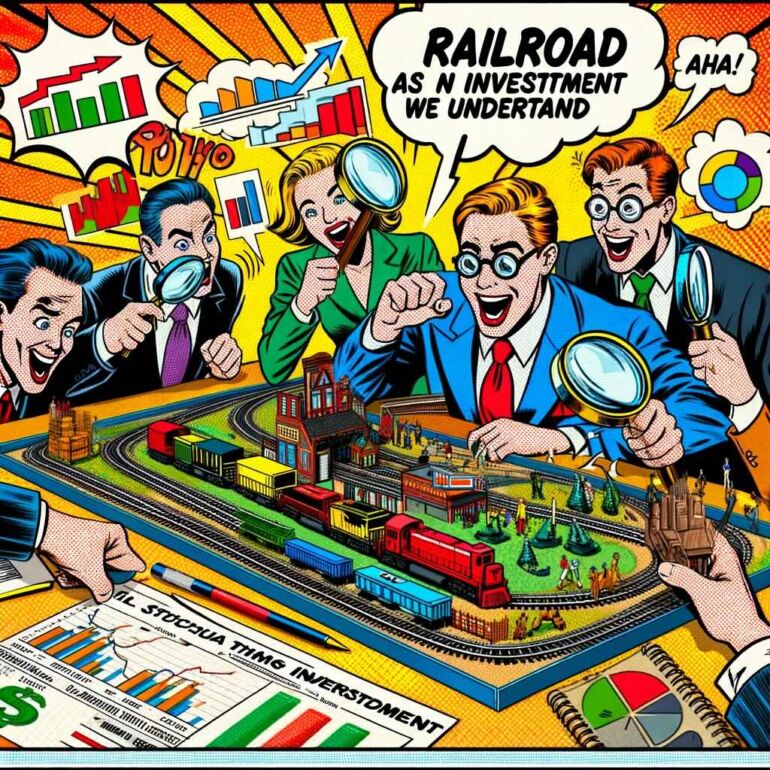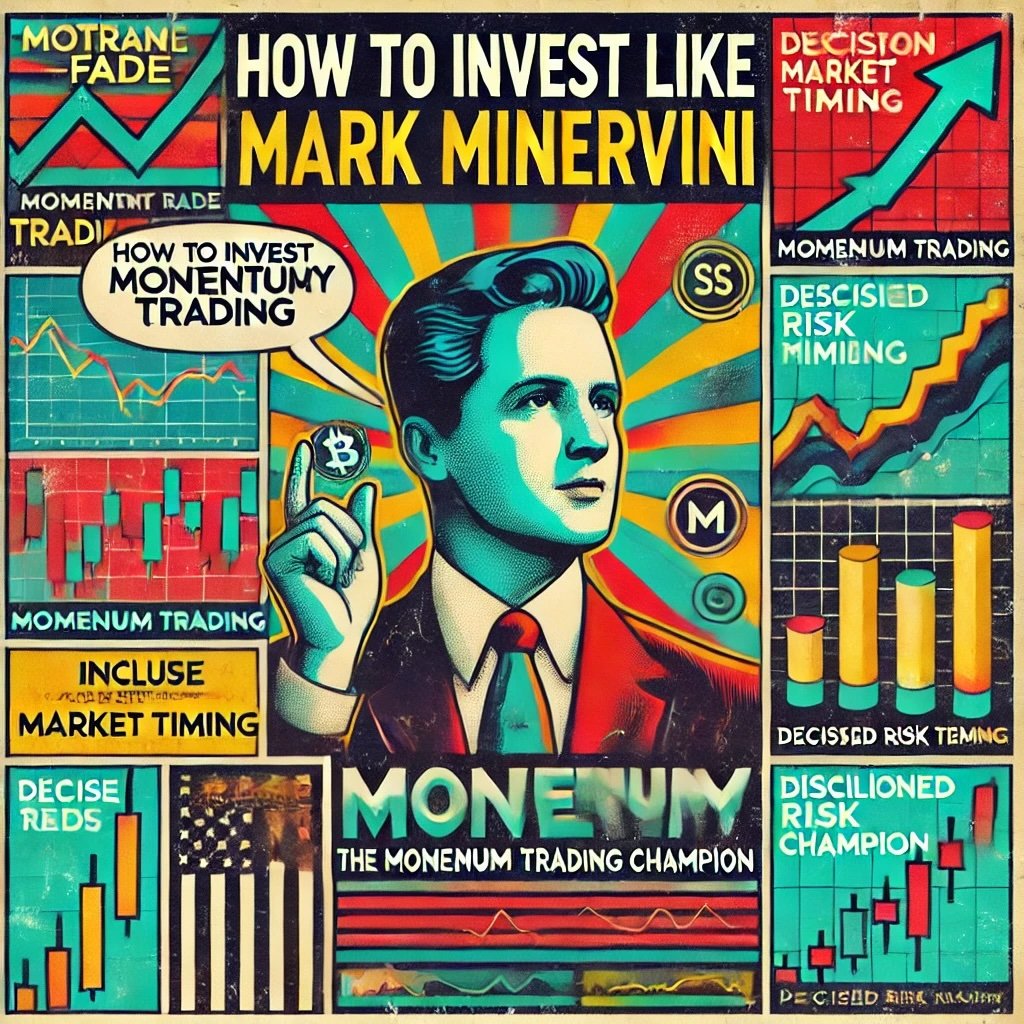The name Warren Buffett has become synonymous with the term “investment guru” in the world of finance. Born in Omaha, Nebraska in 1930, Buffett is one of the most successful investors of all time, often referred to as the “Oracle of Omaha” for his seemingly prophetic ability to pick consistently profitable investments. His net worth, accumulated over more than half a century of strategic investing, consistently puts him among the world’s wealthiest individuals. His astute business acumen, combined with his modest lifestyle and philanthropic nature, has made him a revered figure not just in the world of finance, but also in the broader spectrum of business and society.

Buffett’s investment philosophy is firmly grounded in the principles of value investing, a concept he learned from his mentor Benjamin Graham at Columbia University. Value investing involves buying stocks that are underpriced relative to their intrinsic value, holding them for long periods of time, and reaping the rewards as their market price eventually converges with their true worth. This approach requires rigorous analysis, extreme patience, and a deep understanding of business fundamentals – traits that Buffett has come to exemplify.

The purpose of this article is to delve deeper into the mind of Warren Buffett and demystify his art of stock picking. We’ll journey through the labyrinth of his investment philosophy, spotlighting the key tenets that govern his decision-making process. We’ll examine a fascinating case study on his investment in railroads, providing a concrete example of how his philosophy is put into practice. Along the way, we’ll learn valuable lessons from his successes (and a few missteps), and discuss how modern investors can apply his strategies in today’s ever-changing financial landscape. Whether you’re a budding investor or an experienced hand looking for fresh insights, this voyage into the world of Warren Buffett promises to be enlightening. Welcome aboard!

Who is Warren Buffett: A Brief Biography
The man who would become the “Oracle of Omaha” started from humble beginnings. Born in 1930 during the Great Depression, Warren Buffett was the son of a stockbroker-turned-Congressman. He was introduced to the world of finance at a young age and showcased an uncanny knack for numbers. He bought his first shares at the tender age of 11 and famously filed his first tax return at 13, claiming a $35 deduction for his bicycle used on his paper route.
Buffett’s extraordinary journey took a transformative turn when he was accepted into Columbia Business School, where he encountered the teachings of Benjamin Graham, the father of value investing. The philosophy resonated so deeply with him that it would form the bedrock of his investing approach in the years to come. After his graduation, he worked for a couple of years at Benjamin Graham’s firm before striking out on his own, forming a series of partnerships that laid the foundation for his financial empire.

Warren Buffett’s investment company – Berkshire Hathaway
In the mid-1960s, Buffett took control of Berkshire Hathaway, a struggling New England textile company. Over the ensuing decades, he transformed it into a behemoth conglomerate, owning a diverse range of businesses from Geico Insurance and Dairy Queen to Duracell and BNSF Railway Company. Today, Berkshire Hathaway stands as a testament to Buffett’s genius, a multi-billion dollar conglomerate that has consistently outperformed the S&P 500, making its shareholders exceedingly wealthy in the process.

Buffett’s investment style
Warren Buffett’s investment style can be summed up in one word: disciplined. He remains unwaveringly faithful to the principles of value investing, which advocate buying stocks at a price less than their intrinsic value. But how does one determine this intrinsic value? Buffett seeks companies with strong competitive advantages, excellent management, and the ability to generate stable cash flows. He then performs an exhaustive analysis of these companies’ fundamentals, using financial indicators such as the price-to-earnings (P/E) ratio, return on equity (ROE), and free cash flow yield, to name a few.
Patience is another hallmark of Buffett’s style. He’s not interested in short-term trading or timing the market. Instead, he adopts a long-term perspective, often holding stocks for decades. He famously quipped, “Our favorite holding period is forever.”

In the end, Buffett’s investment style isn’t just about picking stocks; it’s about investing in businesses. It’s about understanding the underlying value of a company, having the patience to wait for the market to recognize that value, and the courage to act decisively when the right opportunity presents itself. As we venture further into the world of Warren Buffett, we’ll continue to unravel the intricacies of his art of stock picking.

Warren Buffett’s Approach to Stock Picking
Warren Buffett, known as the “Oracle of Omaha,” is not only one of the most successful investors in history but also a teacher who has educated countless individuals on the art and science of investing. Buffett’s strategy is not a closely guarded secret – he has openly shared his philosophy many times. His approach is firmly rooted in the principles of value investing, a long-term perspective, emphasis on management quality, and the concept of a margin of safety.
Value Investing Principles
Value investing, in essence, involves buying securities that appear underpriced by some form of fundamental analysis. The value investor seeks companies that they believe the market has undervalued; companies that are priced less than their intrinsic worth. Value investors look at fundamentals such as company earnings, assets, and cash flow to make this determination.
Buffett learned this approach from the father of value investing, Benjamin Graham, during his time at Columbia Business School. However, Buffett modified Graham’s strategy over the years, moving away from the latter’s focus on cheap, often mediocre companies. Instead, Buffett prefers to buy good companies at fair prices, guided by the adage: “It’s far better to buy a wonderful company at a fair price than a fair company at a wonderful price.”

Long-Term Perspective
Buffett famously quipped, “Our favorite holding period is forever.” This statement encapsulates his long-term perspective. He believes that if you aren’t comfortable holding a stock for 10 years, you shouldn’t even consider holding it for 10 minutes. This approach runs counter to the popular day trading trend, which prioritizes quick profits over long-term growth.
Buffett’s long-term focus helps him avoid short-term market noise and volatility. He encourages investors to treat stock purchases like buying a stake in a business, not just a ticker symbol. After all, the real value of a company is derived from its future earnings, which often takes time to materialize.
Emphasis on Management Quality
To Buffett, an excellent management team is a significant factor in his investment decisions. He knows that even the best business model or product can falter under poor leadership. As a result, he evaluates the competence and integrity of a company’s managers before investing.
One of Buffett’s favorite traits in a management team is a love for the company beyond just the paycheck. He values managers who are deeply committed to the company’s success and its mission. This can manifest in various ways, like how the manager handles capital allocation, their ability to create a corporate culture that encourages employee growth and satisfaction, or their long-term vision for the company.
Margin of Safety
The concept of the “margin of safety” is a fundamental principle in Buffett’s investment strategy. This idea, again drawn from Benjamin Graham, suggests always building a safety net into your investment decisions. In practical terms, it means only buying a stock when its market price is significantly below its estimated intrinsic value. The difference provides a cushion to absorb unexpected negative events or miscalculations in the company’s value.
This principle serves two purposes. First, it minimizes the potential downside of any investment. Second, it maximizes the potential return if the market eventually recognizes the company’s true worth. In other words, a good defense (margin of safety) is as important, if not more so, than a good offense (picking winners).
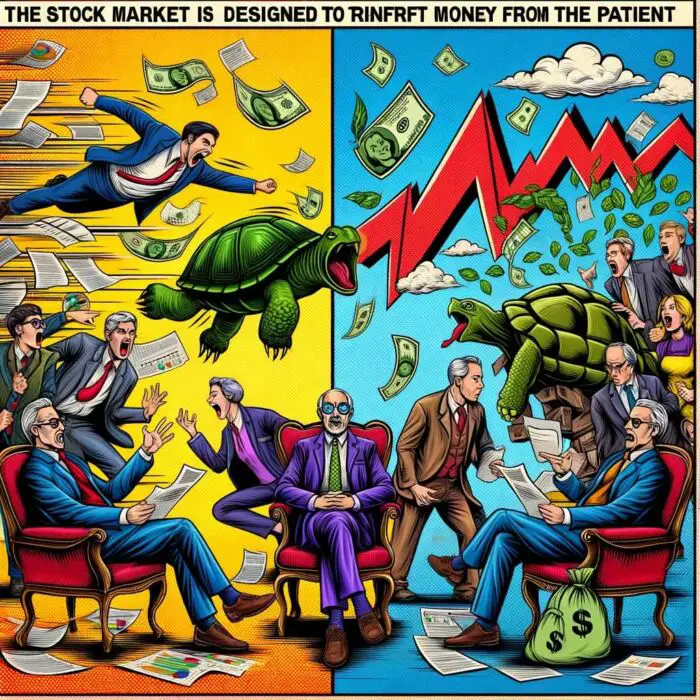
In essence, Buffett’s approach isn’t about speculating on the hottest trends or the next big thing. It’s about methodical, careful analysis, patience, and discipline. It requires time, effort, and the ability to go against the crowd. But as Buffett’s outstanding track record proves, it’s a strategy that can yield extraordinary results. As you delve into the world of investing, remember, as Buffett says, “The stock market is designed to transfer money from the Active to the Patient.”
source: The Why Minutes with Nick Freitas on YouTube

Case Study: Warren Buffett’s Investment in Railroads
A classic example of Warren Buffett’s unique investment philosophy is his investment in the railroad industry, specifically Burlington Northern Santa Fe Corporation (BNSF). This investment reaffirmed that Buffett does not chase flashy technology stocks or unpredictable trends, but instead searches for enduring businesses that provide essential services.
Background of the Investment
Buffett’s railroad journey began in 2006 when Berkshire Hathaway, his investment company, started buying shares in BNSF. The railroad company had been in operation for over 150 years and had a vast network that spanned the entire United States, making it a fundamental part of the country’s infrastructure.
But it wasn’t until 2009, amidst the global financial crisis, when Buffett decided to buy the remaining shares of BNSF that Berkshire didn’t already own. This acquisition cost a whopping $26 billion, making it the largest in Berkshire Hathaway’s history at that time. Many market observers were baffled by this move, seeing the railroad industry as an old, slow-growing sector. But Buffett, as always, had a different perspective.

Why Railroads?
So, why did Buffett invest in railroads? As he pointed out, railroads are a “backbone” industry. They play a crucial role in the economy, moving goods and commodities across the country efficiently and sustainably. The fact that railroads are essential for many other businesses adds to their attractiveness.
Moreover, rail transport has an inherent advantage over truck transport: it’s more fuel-efficient and less emission-intensive. As concerns about climate change and rising fuel costs increased, railroads seemed poised to capitalize on this advantage.
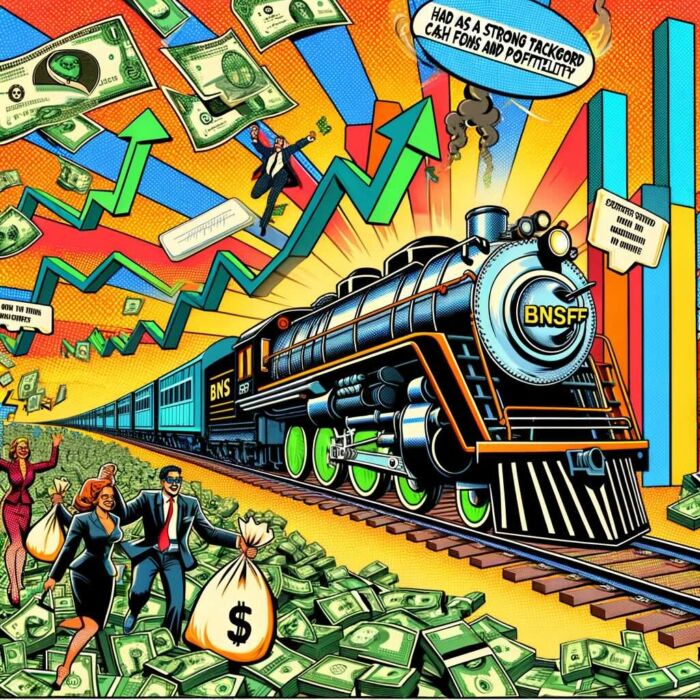
Analysis of the Decision-Making Process
Buffett’s decision to invest in BNSF was firmly rooted in his investment principles. First, he saw value in the railroad industry, which he believed was undervalued by the market. BNSF had a strong track record of cash flows and profitability, and its tangible assets – the rail lines – were practically irreplaceable.
Second, he viewed this investment with a long-term perspective. While the railroad industry wasn’t growing rapidly, it was stable, with high barriers to entry and a consistent demand that wasn’t likely to disappear. It’s a classic “forever” investment that Buffett prefers.
Third, he was impressed with the quality of BNSF’s management. The leadership team had proven their ability to operate efficiently, invest wisely in infrastructure, and navigate the complex regulatory landscape of the railroad industry.
Lastly, Buffett saw a margin of safety in the railroad industry’s future prospects. Even if the company’s growth slowed down, the ongoing need for freight transport and the cost-efficiency of railroads provided a cushion against potential downturns.
Outcome of the Investment
Buffett’s bet on the railroad industry has paid off handsomely. BNSF has consistently contributed substantial earnings and cash flow to Berkshire Hathaway’s bottom line since the acquisition. BNSF had grown its annual earnings from $2.4 billion at the time of the acquisition in 2009 to over $5 billion in 2020.
Even beyond the financial success, Buffett’s investment in BNSF has had a symbolic significance. It underscored his confidence in the American economy, as he made this massive investment in the depths of the financial crisis. It also demonstrated his belief in the future of sustainable transport, long before “ESG” investing became a mainstream trend.
Overall, Buffett’s investment in BNSF is a masterclass in value investing. It’s a testament to his philosophy of betting on solid, reliable businesses rather than chasing the latest investment fads.
source: The Long-Term Investor on YouTube
Lessons from Buffett’s Stock Picking
Warren Buffett’s investment approach offers countless nuggets of wisdom for any investor. His extraordinary success stems not from an ability to predict the stock market’s short-term movements but from basic principles that stand the test of time. Three key lessons stand out from his strategy: the importance of thorough analysis, the value of patience and discipline, and the advantage of investing in what you understand.
Importance of Thorough Analysis
Buffett doesn’t make investment decisions lightly. He puts an immense amount of work into analyzing each company he considers. This includes evaluating a company’s financial health, understanding its business model, assessing the quality of its management team, and estimating its intrinsic value.
He digs deep into a company’s financial statements to understand its earnings, debt levels, cash flow, and asset values. He also assesses less tangible factors such as a company’s competitive position, brand strength, and customer loyalty. His rigorous, meticulous analysis ensures that he fully understands a company’s value and potential before he invests.
Buffett’s focus on thorough analysis is a stark contrast to the fast-paced, surface-level approach many investors use today. In a world where information is abundant but attention spans are short, Buffett’s emphasis on deep analysis is a crucial lesson for all investors.

Patience and Discipline
Investing, according to Buffett, is not a sprint; it’s a marathon. He is famously patient, willing to wait for the right opportunity to invest and then hold onto that investment for years, even decades. He isn’t swayed by short-term market trends or panic-selling during downturns. Instead, he stays focused on the long-term potential of his investments.
This patience is coupled with remarkable discipline. Buffett has a clear investment strategy and he sticks to it, even when it means missing out on potential short-term gains. For instance, during the dot-com boom of the late 1990s, he was criticized for not investing in tech stocks. But he stuck to his guns, refusing to invest in companies he didn’t understand or that didn’t meet his criteria. When the dot-com bubble burst, his disciplined approach was vindicated.
Buffett’s patience and discipline underscore the fact that investing isn’t about making quick bucks. It’s about building wealth over the long term, which requires sticking to your investment strategy and resisting the temptation to react to short-term market movements.
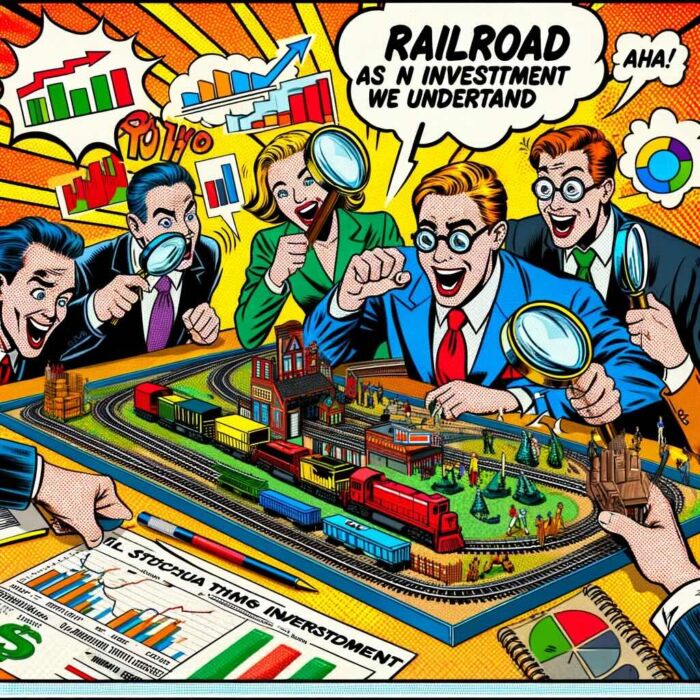
Investing in What You Understand
Another key lesson from Buffett’s investment approach is the principle of sticking to your “circle of competence.” He believes in investing only in businesses that he thoroughly understands. If he can’t understand a company’s business model, he won’t invest in it, no matter how attractive it may seem.
This principle has guided his investment decisions for decades. For example, he avoided investing in tech stocks for a long time because he didn’t understand the technology sector well enough. Instead, he focused on industries he knew well, like insurance, consumer goods, and utilities.
Investing in what you understand means you’re more likely to make informed decisions, recognize when a company is undervalued, and understand the risks involved. It also makes investing more enjoyable because you’re more likely to take an interest in the companies you invest in.
Buffett’s investment principles may seem simple, but they are profoundly effective. They’re not about finding a magic formula or secret trick to beat the market. Instead, they’re about thoughtful analysis, patient discipline, and a clear understanding of what you’re investing in.
source: Thayqua on YouTube
Criticism and Risks of Warren Buffett’s Style
As successful and legendary as Warren Buffett is, his investment style is not without criticism and risks. In the grand spectrum of investing, no approach is foolproof, and even the Oracle of Omaha has had his fair share of missteps and faced scrutiny over the limitations of his investment philosophy.
Limitations of Value Investing
Value investing, the cornerstone of Buffett’s strategy, has been criticized for its potential limitations. One of the main critiques is that it’s often too conservative, potentially causing investors to miss out on high-growth opportunities.
Value investors tend to shy away from sectors and companies where growth is high but so are valuations, like technology or biotech industries. Buffett himself famously avoided the tech sector for a long time because he felt he didn’t understand it. This caution may have served him well during the dot-com bubble, but it also meant Berkshire Hathaway was late to the party with companies like Apple, which turned out to be massive winners.
Furthermore, value investing relies on the premise that the market will eventually recognize and correct mispriced securities. However, the market can remain irrational longer than one can stay solvent. An undervalued company might stay undervalued for a long time, potentially leading to missed opportunities elsewhere.
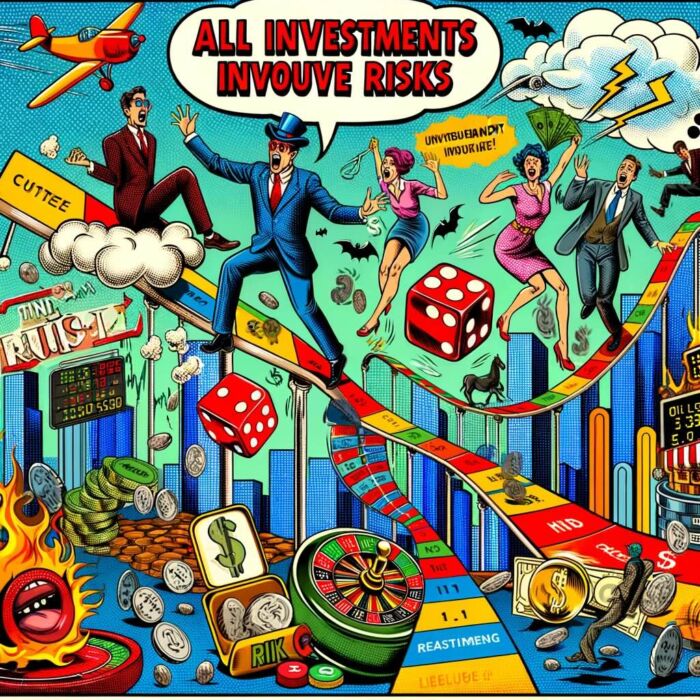
Risk Factors and Failed Investments
Despite his status as one of the world’s greatest investors, Buffett has made his share of mistakes. These serve as critical reminders that all investment strategies, even those employed by the best in the business, involve risks.
For instance, Buffett’s investment in the British supermarket chain Tesco was a notable failure. Initially attracted to the company’s dominant market position and strong brand, Buffett failed to predict the intense competition and internal management issues that would eventually erode Tesco’s value. In 2013, Berkshire began reducing its stake, but the damage was done. Buffett referred to this investment as a “huge mistake,” resulting in losses of around $444 million.
Another example is Buffett’s investment in the US airline industry. In the early 1990s, Buffett bought preferred stock in US Airways. The industry’s cutthroat competition and the company’s financial struggles made this investment a near disaster, with Buffett later confessing, “I bought US Air Preferred some years ago. As they say in poker, ‘If you’ve been in the game 30 minutes and you don’t know who the patsy is, you’re the patsy.'”
Despite these missteps, it’s important to recognize that they are relatively rare in Buffett’s storied career. Nevertheless, they serve as valuable reminders of the risks inherent in investing. Even with thorough analysis, long-term patience, and an emphasis on understanding what you invest in, losses are inevitable. The key is to learn from these mistakes and use them to improve your decision-making process in the future.
In summary, Buffett’s investing style, while generally successful, is not foolproof or without its risks and critics. As with any investing strategy, it’s essential to understand these potential pitfalls and account for them in your investment approach. As the man himself said, “Risk comes from not knowing what you’re doing.” So equip yourself with knowledge, stay disciplined, and remember: investing is a marathon, not a sprint.
12-Question FAQ: Warren Buffett and the Art of Stock Picking
What is Warren Buffett’s core investment philosophy?
Warren Buffett’s core philosophy revolves around value investing—buying stocks priced below their intrinsic value. He focuses on businesses with durable competitive advantages, excellent management, and consistent profitability.
How did Benjamin Graham influence Buffett’s approach?
Benjamin Graham, Buffett’s mentor at Columbia University, introduced him to value investing. While Graham focused on “cigar-butt” investing (buying cheap but mediocre companies), Buffett evolved this method, preferring quality businesses bought at fair prices.
Why does Buffett emphasize intrinsic value?
Buffett believes every stock has an intrinsic value—its true worth based on fundamentals like cash flow, earnings, and assets. He seeks stocks trading significantly below this value, offering a margin of safety against market volatility or misjudgment.
What does Buffett mean by a “margin of safety”?
The margin of safety principle means buying investments well below their calculated worth, providing a cushion if things go wrong. It’s a defensive layer that minimizes risk while allowing for significant upside when prices correct.
Why is patience critical in Buffett’s strategy?
Buffett’s famous quote, “Our favorite holding period is forever,” highlights his long-term focus. He believes wealth compounds best when investors remain patient and avoid reacting to short-term market noise or trends.
How does Buffett assess company management?
Buffett values management teams that are competent, ethical, and passionate about their business. He prioritizes leaders who allocate capital wisely, maintain shareholder focus, and think long-term rather than chasing quarterly results.
Why did Buffett invest in Burlington Northern Santa Fe (BNSF)?
Buffett invested in BNSF Railways because he saw it as a stable, essential industry with strong cash flow and high barriers to entry. He viewed railroads as “the backbone of the American economy” with sustainable competitive advantages.
What lessons can investors learn from Buffett’s railroad investment?
His BNSF acquisition demonstrates his preference for reliable, asset-heavy industries with long-term relevance. It also shows his contrarian confidence—buying heavily during a financial crisis when others were fearful.
Has Buffett made investment mistakes?
Yes, Buffett admits to several mistakes, such as investments in Tesco and US Airways. These experiences reinforced his belief in staying within one’s circle of competence and avoiding businesses he doesn’t fully understand.
Why does Buffett avoid short-term trading?
Buffett views short-term trading as speculation rather than investing. He prefers to own shares of companies indefinitely, focusing on the underlying business performance, not daily market fluctuations.
What are the main criticisms of Buffett’s style?
Critics argue that value investing can be too conservative, causing investors to miss fast-growing sectors like tech. Others say Buffett’s approach may not adapt well to today’s faster-moving, innovation-driven markets.
What is Buffett’s ultimate investing advice?
Buffett advises: “Be fearful when others are greedy, and greedy when others are fearful.” He encourages investors to stay disciplined, think independently, and invest only in businesses they truly understand.

Conclusion Warren Buffett’s Stock Picking Strategy
Warren Buffett’s approach to stock picking, honed over more than half a century, has made him one of the world’s most successful and respected investors. His strategy, deeply rooted in the principles of value investing, focuses on thorough analysis of a company’s fundamentals, a long-term perspective, a firm belief in quality management, and the concept of a margin of safety.
Instead of chasing hot trends or trying to time the market, Buffett seeks out companies that are undervalued by the market but have strong fundamentals and promising long-term prospects. He places a high premium on companies with exceptional management teams and looks for opportunities where the market price offers a significant margin of safety compared to his estimate of the company’s intrinsic value.
Buffett’s patience and discipline are integral to his approach. He resists the temptation to make hasty decisions based on short-term market trends or panic in downturns. Instead, he remains focused on his carefully selected portfolio of investments, holding onto them for the long haul and letting compounding do its magic.

Current Application and Potential for Future Investors
While some critics argue that Buffett’s style of investing is outdated in today’s fast-paced, technology-driven market, his principles remain relevant. In an era where information is at our fingertips and market volatility can trigger knee-jerk reactions, the principles of thorough analysis, patience, discipline, and understanding one’s investments are more critical than ever.
For future investors, Buffett’s approach serves as a potent reminder that investing is not about getting rich quickly. Instead, it’s about understanding businesses, staying patient, and thinking independently. It’s about recognizing that markets can be irrational in the short term and that genuine, sustainable success comes from buying and holding companies that provide value.
The simplicity of Buffett’s principles belies their profound impact. They don’t require a finance degree or a supercomputer to implement. Instead, they require a willingness to put in the work, think long term, and occasionally, go against the herd.
In today’s complex and often tumultuous investing landscape, the timeless wisdom of Warren Buffett shines like a beacon, guiding those who seek not just to invest, but to invest wisely and well. As Buffett famously said, “It’s not rocket science. Investing is not a game where the guy with the 160 IQ beats the guy with 130 IQ. Rationality is essential.” And if there’s one thing we can all learn from the Oracle of Omaha, it’s the power of rational, informed, and patient investing.
Important Information
Comprehensive Investment Disclaimer:
All content provided on this website (including but not limited to portfolio ideas, fund analyses, investment strategies, commentary on market conditions, and discussions regarding leverage) is strictly for educational, informational, and illustrative purposes only. The information does not constitute financial, investment, tax, accounting, or legal advice. Opinions, strategies, and ideas presented herein represent personal perspectives, are based on independent research and publicly available information, and do not necessarily reflect the views or official positions of any third-party organizations, institutions, or affiliates.
Investing in financial markets inherently carries substantial risks, including but not limited to market volatility, economic uncertainties, geopolitical developments, and liquidity risks. You must be fully aware that there is always the potential for partial or total loss of your principal investment. Additionally, the use of leverage or leveraged financial products significantly increases risk exposure by amplifying both potential gains and potential losses, and thus is not appropriate or advisable for all investors. Using leverage may result in losing more than your initial invested capital, incurring margin calls, experiencing substantial interest costs, or suffering severe financial distress.
Past performance indicators, including historical data, backtesting results, and hypothetical scenarios, should never be viewed as guarantees or reliable predictions of future performance. Any examples provided are purely hypothetical and intended only for illustration purposes. Performance benchmarks, such as market indexes mentioned on this site, are theoretical and are not directly investable. While diligent efforts are made to provide accurate and current information, “Picture Perfect Portfolios” does not warrant, represent, or guarantee the accuracy, completeness, or timeliness of any information provided. Errors, inaccuracies, or outdated information may exist.
Users of this website are strongly encouraged to independently verify all information, conduct comprehensive research and due diligence, and engage with qualified financial, investment, tax, or legal professionals before making any investment or financial decisions. The responsibility for making informed investment decisions rests entirely with the individual. “Picture Perfect Portfolios” explicitly disclaims all liability for any direct, indirect, incidental, special, consequential, or other losses or damages incurred, financial or otherwise, arising out of reliance upon, or use of, any content or information presented on this website.
By accessing, reading, and utilizing the content on this website, you expressly acknowledge, understand, accept, and agree to abide by these terms and conditions. Please consult the full and detailed disclaimer available elsewhere on this website for further clarification and additional important disclosures. Read the complete disclaimer here.

